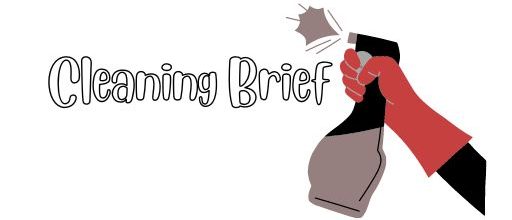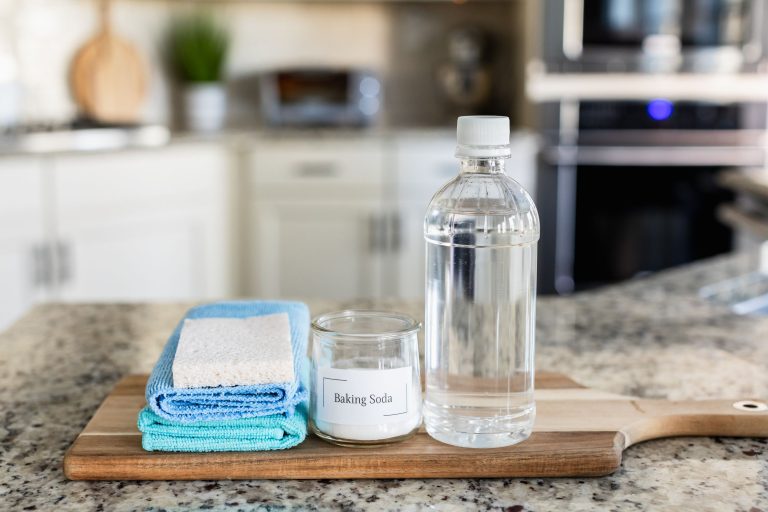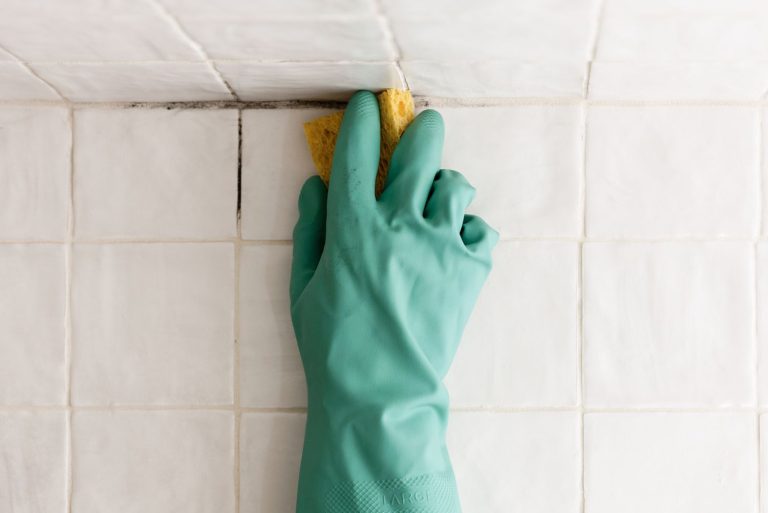How to Safely Remove Mold from Leather Jacket: Expert Techniques
To clean mold off a leather jacket, gently wipe the affected area with a solution of equal parts vinegar and water. Make sure to test the solution on a small, inconspicuous area of the jacket first to avoid any potential damage.
Introducing How to Clean Mold off Leather Jacket Leather jackets are stylish and durable, but unfortunately, they can become a breeding ground for mold if not properly cared for. Mold stains not only ruin the appearance of your jacket but also pose health risks.
Whether your leather jacket has been stored in a damp place or exposed to moisture, it’s crucial to address the mold issue promptly. Cleaning mold off a leather jacket requires a delicate approach to prevent any damage to the material. In this guide, we will provide you with effective tips on how to remove mold from your leather jacket and restore its original condition. With the right techniques and a little bit of patience, you can say goodbye to mold stains and keep your favorite leather jacket looking as good as new.
Identifying Mold On Leather Jacket
Mold growth on a leather jacket can be a real headache to deal with. Not only does it affect the appearance of your prized possession, but it can also cause health issues if left untreated. Therefore, it is important to identify mold on a leather jacket as early as possible. In this section, we will discuss two key ways to identify mold on a leather jacket: visual inspection and musty odor.
Visual Inspection
Visual inspection is the easiest way to identify mold on a leather jacket. Here’s how you can do it:
- Place your leather jacket in a well-lit area.
- Examine the surface of the jacket carefully.
- Look for any discoloration or patches that appear fuzzy or powdery.
- Pay attention to areas that are prone to moisture, such as cuffs, collars, and underarm areas.
- If you notice any green, black, or white spots, it is highly likely that your leather jacket has mold.
Detecting mold through visual inspection is crucial as it allows you to take immediate action to prevent further damage. If you come across any mold on your leather jacket, do not panic. We’ll discuss the steps to clean mold off a leather jacket in detail later on.
Musty Odor
Another way to identify mold on a leather jacket is through its distinct musty odor. Mold tends to produce a damp, earthy smell that is quite unpleasant. Here’s how you can use your sense of smell to identify mold:
- Hold your leather jacket close to your nose.
- Inhale deeply and pay attention to any unusual smell.
- If you notice a musty odor similar to wet soil or a dank basement, chances are there is mold on your leather jacket.
A musty odor is a clear indication of mold growth, even if you can’t see any visible signs. It is important to address the issue promptly to prevent further damage to your leather jacket and minimize health risks.

Credit: www.wikihow.com
Preparing Leather Jacket For Mold Removal
When it comes to cleaning mold off a leather jacket, proper preparation is key. Taking the time to prepare your jacket before starting the mold removal process will help ensure that you don’t accidentally damage the leather or spread the mold spores further.
Gentle Cleaning
To start preparing your leather jacket for mold removal, you’ll want to gently clean the surface. Begin by removing any loose dirt or debris using a soft-bristled brush or a clean, dry cloth. This will prevent any scratching or further damage to the leather. Next, create a mild cleaning solution by mixing a small amount of gentle soap with warm water. Using a clean, damp cloth, carefully wipe down the entire jacket, paying special attention to any visible mold spots. Be sure to avoid excessive moisture, as this can potentially harm the leather. Once you have finished cleaning, use a clean, damp cloth to remove any remaining soap residue.
Drying The Jacket
After gently cleaning the leather jacket, it is crucial to thoroughly dry it before moving forward. Moisture left behind can provide a breeding ground for mold, so proper drying is essential. Begin by gently patting the surface with a clean, absorbent towel to remove excess moisture. Avoid rubbing or wringing the jacket, as this can damage the leather or spread the mold spores. Find a well-ventilated area and hang the jacket to air dry naturally. Avoid direct sunlight and heat sources, as they can cause the leather to dry too quickly and potentially crack. Allow the jacket to dry completely before proceeding with the mold removal process.
Expert Techniques For Mold Removal
When it comes to removing mold from a leather jacket, it’s crucial to use expert techniques for effective and safe removal. Mold can be stubborn and harmful to the leather, so it’s essential to approach the cleaning process with care and precision.
Using White Vinegar
White vinegar is a powerful and natural way to remove mold from leather. It’s a safe and highly effective method that doesn’t harm the leather material.
- Mix equal parts of white vinegar and water in a spray bottle.
- Spray the solution onto the affected areas of the leather jacket.
- Gently scrub the moldy spots with a soft-bristled brush.
- Wipe the leather jacket with a clean, damp cloth to remove the vinegar solution.
- Allow the jacket to air dry in a well-ventilated area, away from direct sunlight.
Tea Tree Oil Solution
Tea tree oil is known for its antifungal properties, making it an excellent solution for removing mold from leather without causing damage.
- Dilute 1 teaspoon of tea tree oil in a cup of water.
- Dip a clean cloth into the solution and gently dab it onto the moldy areas of the jacket.
- Let the tea tree oil solution sit on the leather for a few hours to effectively kill the mold.
- Wipe the jacket with a damp cloth to remove any remaining oil residue.
- Air-dry the leather jacket away from direct heat sources.

Credit: www.amazon.com
Preventive Measures To Avoid Mold
To clean mold off a leather jacket, start by gently brushing the mold off with a soft brush. Then, mix mild detergent with water and wipe the affected area. Allow the jacket to dry thoroughly before applying leather conditioner to prevent future mold growth.
Regularly inspect and clean your leather jacket to avoid mold buildup.
Proper Storage
To prevent mold from colonizing your leather jacket, proper storage is crucial. Follow these tips to ensure your jacket remains mold-free:
- Store your leather jacket in a cool and dry place, away from direct sunlight and sources of moisture. Mold thrives in humid environments.
- Avoid storing your leather jacket in plastic or vinyl garment bags. These materials can trap moisture and create a breeding ground for mold. Instead, use a breathable fabric garment bag or wrap your jacket in a cotton sheet.
- If you plan to store your leather jacket for an extended period, consider using a dehumidifier or moisture-absorbing products, such as silica gel packs, to reduce humidity in the storage area.
- Maintain proper airflow around your leather jacket during storage. Avoid tightly packing it with other items, as this can restrict ventilation and create an environment conducive to mold growth.
Regular Maintenance
Regular maintenance of your leather jacket can help prevent mold growth and ensure its longevity. Follow these steps to keep your jacket clean and mold-free:
- Inspect your leather jacket periodically for any signs of mold or mildew. If you spot any, address it immediately to prevent further spread.
- Wipe down your leather jacket regularly with a soft, damp cloth to remove any dirt or dust that could provide a breeding ground for mold.
- Avoid using harsh chemicals or cleaners on your leather jacket, as they can damage the material. Instead, use a leather cleaner or a mild soap solution specifically formulated for leather.
- After cleaning, allow your leather jacket to air dry naturally in a well-ventilated area. Avoid using heat sources like hairdryers or radiators, as they can cause the leather to shrink or crack.
- Condition your leather jacket regularly with a leather conditioner or oil to keep the material supple and prevent it from drying out. Dry leather is more susceptible to mold growth.
- Keep your leather jacket away from high humidity areas, such as bathrooms or laundry rooms, as these can promote mold growth.
By following these preventive measures, you can keep your leather jacket mold-free and ensure its longevity. Proper storage and regular maintenance are key to preserving the beauty and durability of your leather jacket.
Seeking Professional Help If Necessary
While cleaning mold off a leather jacket can often be done with homemade remedies and a little elbow grease, there are instances where seeking professional help becomes necessary. Knowing when to consult a professional and choosing a reliable leather specialist is crucial to ensuring your leather jacket is properly treated and restored. If you’re unsure about handling the mold yourself or if the mold has caused extensive damage, it’s best to rely on the expertise of a professional.
When To Consult A Professional
If you notice any of the following signs, it’s time to reach out to a professional leather specialist:
- Severe mold infestation: If the mold on your leather jacket covers a large area or has deeply penetrated the material, professional assistance may be required.
- Strong, persistent odor: Mold not only leaves unsightly stains but also emits a musty smell. If the odor persists even after attempting home remedies, it’s best to consult a professional for thorough removal.
- Complex leather construction: Certain leather jackets have unique features such as intricate stitching, delicate embellishments, or specialized finishes. In such cases, professional expertise ensures that these details are carefully preserved during the cleaning process.
Choosing A Reliable Leather Specialist
When selecting a professional leather specialist, it’s essential to consider the following factors:
- Experience and expertise: Look for a leather specialist who has years of experience in handling mold removal and leather restoration. Check for customer reviews and testimonials to ensure their expertise.
- Specialization in leather: Leather care requires specific knowledge and techniques. Choose a professional who specializes in leather jacket cleaning and restoration, rather than a general cleaning service.
- Quality of products and methods: A reliable leather specialist will use high-quality cleaning agents and techniques that are safe for your leather jacket. Inquire about the products they use to ensure they won’t cause any further damage.
- Guarantee of results: A reputable professional will stand behind their work and provide a guarantee of satisfactory results. Ask about their guarantee policy to ensure your satisfaction is prioritized.
By carefully considering these factors and selecting a trusted professional, you can have peace of mind knowing that your leather jacket will be handled with care and restored to its former glory.

Credit: www.instagram.com
Frequently Asked Questions On How To Clean Mold Off Leather Jacket
How Do You Clean Mold Off A Leather Jacket?
To clean mold off a leather jacket, first brush off any loose mold with a soft cloth. Then mix equal parts water and rubbing alcohol, and gently wipe the affected area with a cloth soaked in the solution. Allow the jacket to air dry, and apply a leather conditioner to restore its shine.
Can You Use Vinegar To Remove Mold From Leather?
Yes, vinegar can be used to remove mold from leather. Mix equal parts white vinegar and water, and lightly dampen a cloth with the solution. Gently wipe the moldy area of the leather jacket, and let it air dry. The acidity of vinegar helps kill the mold and eliminate the musty odor.
What Are The Best Cleaners For Removing Mold From Leather?
Some of the best cleaners for removing mold from leather jackets include mild soap and water, rubbing alcohol, white vinegar, and specialized leather cleaners. These products effectively kill the mold and remove stains while being gentle on the leather. Always test the cleaner on a small, inconspicuous area first before applying it to the entire jacket.
Conclusion
Cleaning mold off a leather jacket requires attention to detail and proper techniques. Regular maintenance and prompt action are crucial for preserving the integrity of your cherished garment. By following the steps outlined in this guide, you can easily and effectively remove mold from your leather jacket, ensuring its longevity and continued stylish appearance.





